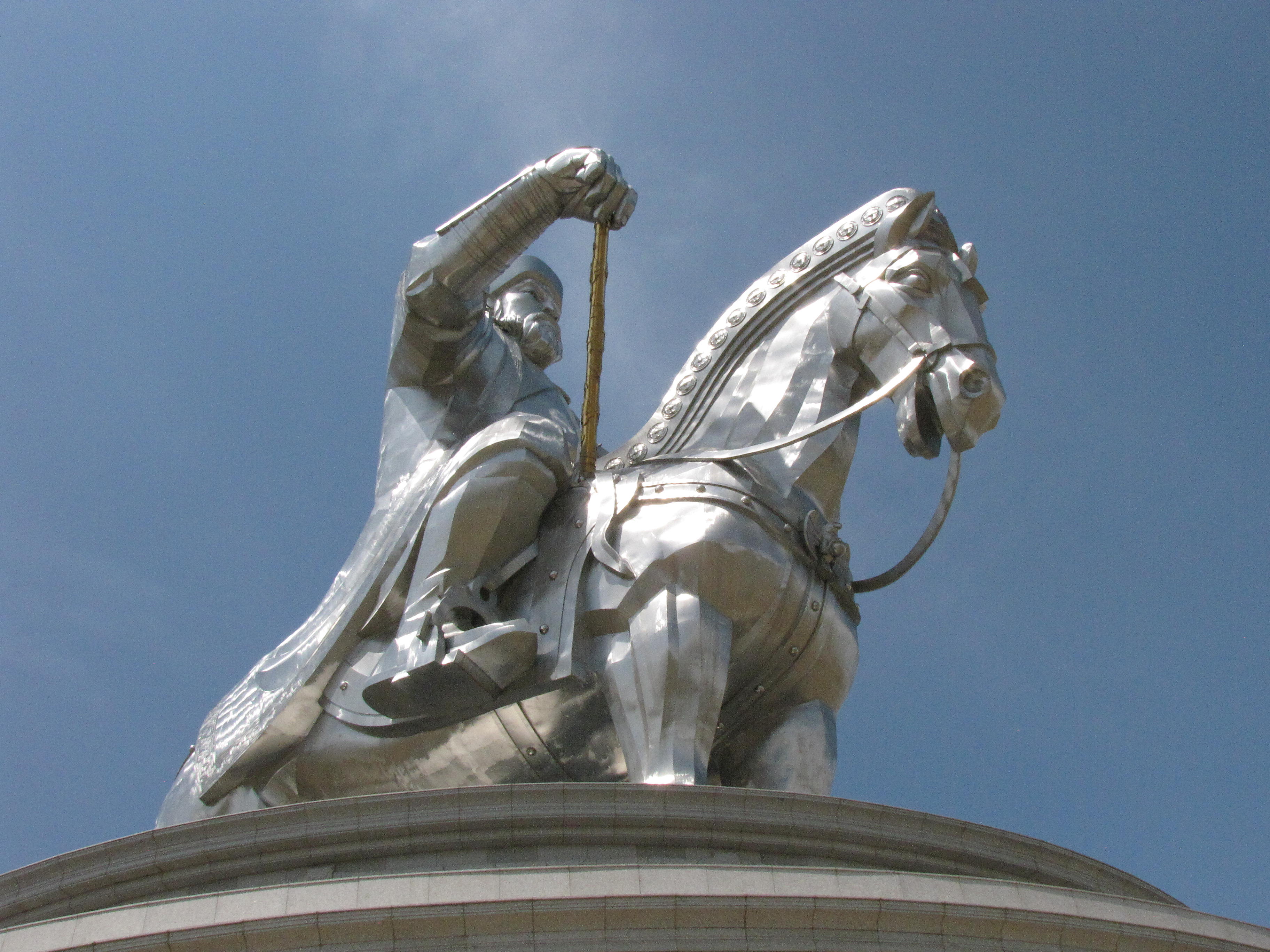Massive statue of Chinggis Khaan, Mongolia – Photo by L.Weikel
Return of the Mongols
OK, I know. I’m weird. I love me my Tuvan throat singing and I’ve not been shy in sharing that love with you, my peeps.
If you recall, I mentioned that even though I refer to throat singing in general as ‘Tuvan’ throat singing, it actually originated in and is endemic to the culture of southwestern Siberia (the Altai region), south central Siberia (Tuva), and Mongolia.
Of course, that’s because all of the political boundaries separating these countries didn’t exist back when throat singing originated. But just as there are languages, and dialects within those languages, that share a common root, the same applies to the phenomenon of throat singing.
Mongolian Folk-Metal
I’ve already given you a flavor of throat singing from the Altai Republic. And then some examples of Tuvan throat singing. Tonight I’m going to give you a fascinating and modern take on this form of singing by introducing you to The Hu, a Mongolian folk-metal band. Yeah. You read that right. Folk-metal.
And it is some crazy awesome music, if I do say so myself.
Beyond loving the 21stcentury interpretation of my beloved throat singing, I find the cinematography in the video for this song (Yuve Yuve Yu) succeeds in capturing aspects of the astounding beauty of the Mongolian landscape.
I have to admit that the lyrics to this song stir something deep within me also. I resonate with the desire of these musicians to urge their Mongolian kin to reconnect with the legendary ferocity of their ancestors and their astonishingly successful leader. Their ferocious nature, though, remains an unmistakable core thread of their being, no matter where you look or whom you meet.
Reconnecting to the Ferocity of Life
But the ferocity is not what you might expect, meaning war-like or antagonistic expression. Rather, the Mongolians and southern Siberians (Tuvans) I’ve met live ferociously. They love and laugh and share themselves with a wildness and intensity that mirrors the harsh environment in which they live: the vast steppes, mountains, and taiga.
Indeed, I’ve learned a lot more about Chinggis (Ghengis) Khaan since traveling to Tuva in 2003 and then returning to Mongolia and southern Siberia in 2017. Fascinatingly, his values and beliefs resulted in the Mongols being instrumental in cultivating and disseminating education, literacy, and religious freedom throughout their vast empire.
There is something to the inherent wildness of the steppes and the nomadic way of life that appeals to me at the deepest level. Granted, much has changed in the way many Mongolians and Tuvans live, including moving to cities, such as Irkutsk, Kyzyl, and Ulaanbaatar. I feel it is the wild essence that The Hu are calling their countrymen and women to remember and reclaim.
I need to post. Maybe I’ll write more about this another time… In the meantime, I hope you groove to this as much as I do.

Sculpture in Main Square of Ulaanbaatar, Mongolia – photo by L. Weikel
(T-1054)

I love what you’re doing my friend. I’m digging the music, their energy is intoxicating!
Thank you
Thanks, Elizabeth! I’m delighted you’re joining me on this bizarre journey!